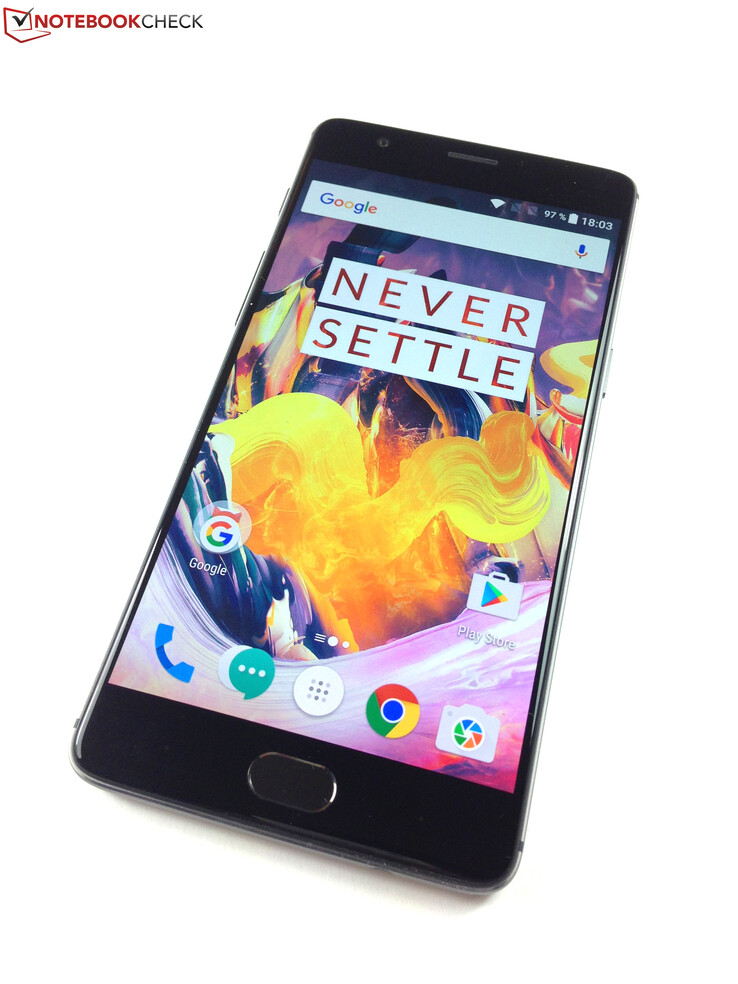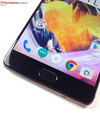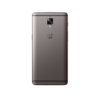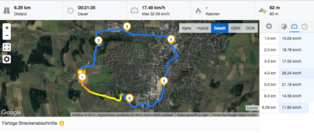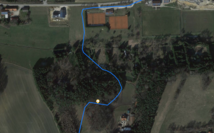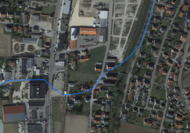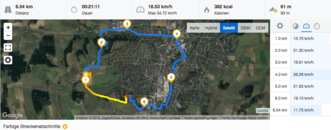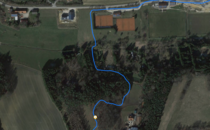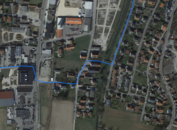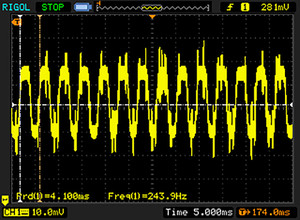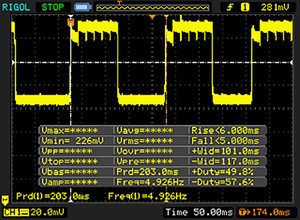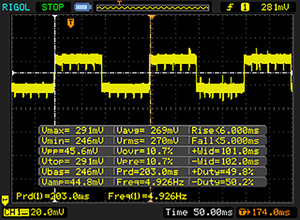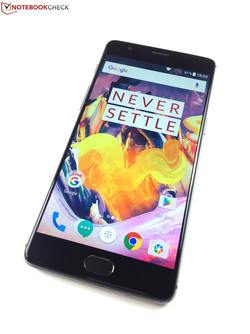Breve Análise do Smartphone OnePlus 3T
Os Top 10
» Os Top 10 Portáteis Multimídia
» Os Top 10 Portáteis de Jogos
» Os Top 10 Portáteis Leves para Jogos
» Os Top 10 Portáteis Acessíveis de Escritório/Empresariais
» Os Top 10 Portáteis Premium de Escritório/Empresariais
» Os Top 10 dos Portáteis Workstation
» Os Top 10 Subportáteis
» Os Top 10 Ultrabooks
» Os Top 10 Conversíveis
» Os Top 10 Tablets
» Os Top 10 Smartphones
» A melhores Telas de Portáteis Analisadas Pela Notebookcheck
» Top 10 dos portáteis abaixo dos 500 Euros da Notebookcheck
» Top 10 dos Portáteis abaixo dos 300 Euros
Size Comparison
| Networking | |
| iperf3 transmit AX12 | |
| Apple iPhone 7 (Klaus I211) | |
| Samsung Galaxy S7 | |
| OnePlus 3 | |
| OnePlus 3T | |
| Huawei P9 | |
| iperf3 receive AX12 | |
| Apple iPhone 7 (Klaus I211) | |
| OnePlus 3 | |
| Samsung Galaxy S7 | |
| Huawei P9 | |
| OnePlus 3T | |
| |||||||||||||||||||||||||
iluminação: 84 %
iluminação com acumulador: 421 cd/m²
Contraste: ∞:1 (Preto: 0 cd/m²)
ΔE Color 7.1 | 0.5-29.43 Ø5
ΔE Greyscale 6.8 | 0.57-98 Ø5.3
Gamma: 2.23
| OnePlus 3T Optic-AMOLED, 1920x1080, 5.50 | Apple iPhone 7 IPS, 1334x750, 4.70 | HTC 10 Super LCD 5, 2560x1440, 5.20 | Huawei P9 IPS-NEO, JDI, 1920x1080, 5.20 | OnePlus 3 Optic-AMOLED, 1920x1080, 5.50 | Samsung Galaxy S7 SAMOLED, 2560x1440, 5.10 | |
|---|---|---|---|---|---|---|
| Screen | 50% | 31% | 33% | 19% | 35% | |
| Brightness middle | 421 | 556 32% | 445 6% | 582 38% | 419 0% | 350 -17% |
| Brightness | 430 | 519 21% | 434 1% | 563 31% | 431 0% | 351 -18% |
| Brightness Distribution | 84 | 90 7% | 93 11% | 91 8% | 84 0% | 98 17% |
| Black Level * | 0.34 | 0.36 | 0.38 | |||
| Colorchecker dE 2000 * | 7.1 | 1.3 82% | 2.8 61% | 4.4 38% | 4.1 42% | 2.04 71% |
| Colorchecker dE 2000 max. * | 15.3 | 2.6 83% | 5.8 62% | 7.4 52% | 12 22% | 3.25 79% |
| Greyscale dE 2000 * | 6.8 | 1.9 72% | 3.7 46% | 4.8 29% | 3.3 51% | 1.63 76% |
| Gamma | 2.23 99% | 2.26 97% | 2.31 95% | 2.2 100% | 2.1 105% | 2.07 106% |
| CCT | 7866 83% | 6818 95% | 7164 91% | 6175 105% | 6550 99% | 6391 102% |
| Contrast | 1635 | 1236 | 1532 | |||
| Color Space (Percent of AdobeRGB 1998) | 63.15 | 77.78 | 89.38 | 86.86 | ||
| Color Space (Percent of sRGB) | 99.71 | 99.44 | 100 | 99.35 |
* ... smaller is better
Screen Flickering / PWM (Pulse-Width Modulation)
| Screen flickering / PWM detected | 244 Hz | ||
The display backlight flickers at 244 Hz (worst case, e.g., utilizing PWM) . The frequency of 244 Hz is relatively low, so sensitive users will likely notice flickering and experience eyestrain at the stated brightness setting and below. In comparison: 53 % of all tested devices do not use PWM to dim the display. If PWM was detected, an average of 17933 (minimum: 5 - maximum: 3846000) Hz was measured. | |||
Display Response Times
| ↔ Response Time Black to White | ||
|---|---|---|
| 11 ms ... rise ↗ and fall ↘ combined | ↗ 6 ms rise | |
| ↘ 5 ms fall | ||
| The screen shows good response rates in our tests, but may be too slow for competitive gamers. In comparison, all tested devices range from 0.1 (minimum) to 240 (maximum) ms. » 24 % of all devices are better. This means that the measured response time is better than the average of all tested devices (21.5 ms). | ||
| ↔ Response Time 50% Grey to 80% Grey | ||
| 11 ms ... rise ↗ and fall ↘ combined | ↗ 6 ms rise | |
| ↘ 5 ms fall | ||
| The screen shows good response rates in our tests, but may be too slow for competitive gamers. In comparison, all tested devices range from 0.2 (minimum) to 636 (maximum) ms. » 19 % of all devices are better. This means that the measured response time is better than the average of all tested devices (33.8 ms). | ||
| AnTuTu v6 - Total Score (sort by value) | |
| OnePlus 3T | |
| Apple iPhone 7 | |
| HTC 10 | |
| Huawei P9 | |
| OnePlus 3 | |
| Samsung Galaxy S7 | |
| Geekbench 4.0 | |
| 64 Bit Single-Core Score (sort by value) | |
| OnePlus 3T | |
| Apple iPhone 7 | |
| Huawei P9 | |
| OnePlus 3 | |
| 64 Bit Multi-Core Score (sort by value) | |
| OnePlus 3T | |
| Apple iPhone 7 | |
| Huawei P9 | |
| OnePlus 3 | |
| GFXBench (DX / GLBenchmark) 2.7 | |
| T-Rex Onscreen (sort by value) | |
| OnePlus 3T | |
| Apple iPhone 7 | |
| HTC 10 | |
| Huawei P9 | |
| OnePlus 3 | |
| Samsung Galaxy S7 | |
| 1920x1080 T-Rex Offscreen (sort by value) | |
| OnePlus 3T | |
| Apple iPhone 7 | |
| HTC 10 | |
| Huawei P9 | |
| OnePlus 3 | |
| Samsung Galaxy S7 | |
| GFXBench 3.0 | |
| on screen Manhattan Onscreen OGL (sort by value) | |
| OnePlus 3T | |
| Apple iPhone 7 | |
| HTC 10 | |
| Huawei P9 | |
| OnePlus 3 | |
| Samsung Galaxy S7 | |
| 1920x1080 1080p Manhattan Offscreen (sort by value) | |
| OnePlus 3T | |
| Apple iPhone 7 | |
| HTC 10 | |
| Huawei P9 | |
| OnePlus 3 | |
| Samsung Galaxy S7 | |
| GFXBench 3.1 | |
| on screen Manhattan ES 3.1 Onscreen (sort by value) | |
| OnePlus 3T | |
| Apple iPhone 7 | |
| HTC 10 | |
| Huawei P9 | |
| OnePlus 3 | |
| Samsung Galaxy S7 | |
| 1920x1080 Manhattan ES 3.1 Offscreen (sort by value) | |
| OnePlus 3T | |
| Apple iPhone 7 | |
| HTC 10 | |
| Huawei P9 | |
| OnePlus 3 | |
| Samsung Galaxy S7 | |
| PCMark for Android - Work performance score (sort by value) | |
| OnePlus 3T | |
| HTC 10 | |
| Huawei P9 | |
| OnePlus 3 | |
| Samsung Galaxy S7 | |
| Octane V2 - Total Score (sort by value) | |
| OnePlus 3T | |
| Apple iPhone 7 | |
| HTC 10 | |
| Huawei P9 | |
| OnePlus 3 | |
| Samsung Galaxy S7 | |
| Mozilla Kraken 1.1 - Total (sort by value) | |
| OnePlus 3T | |
| Apple iPhone 7 | |
| HTC 10 | |
| Huawei P9 | |
| OnePlus 3 | |
| Samsung Galaxy S7 | |
| WebXPRT 2015 - Overall (sort by value) | |
| OnePlus 3T | |
| Apple iPhone 7 | |
| HTC 10 | |
| Huawei P9 | |
| OnePlus 3 | |
| Samsung Galaxy S7 | |
| JetStream 1.1 - Total Score (sort by value) | |
| OnePlus 3T | |
| Apple iPhone 7 | |
| HTC 10 | |
| Huawei P9 | |
| OnePlus 3 | |
| Samsung Galaxy S7 | |
* ... smaller is better
| OnePlus 3T | Apple iPhone 7 | HTC 10 | Huawei P9 | OnePlus 3 | Samsung Galaxy S7 | |
|---|---|---|---|---|---|---|
| AndroBench 3-5 | -56% | -49% | -19% | -28% | ||
| Sequential Read 256KB | 436.4 | 275.1 -37% | 281.3 -36% | 408.7 -6% | 483.8 11% | |
| Sequential Write 256KB | 165.3 | 115.6 -30% | 72.2 -56% | 153.3 -7% | 145.7 -12% | |
| Random Read 4KB | 123.6 | 29.92 -76% | 39 -68% | 137.6 11% | 85.9 -31% | |
| Random Write 4KB | 74.4 | 15.89 -79% | 47.45 -36% | 18.23 -75% | 16.01 -78% | |
| Sequential Read 256KB SDCard | 83.3 | 55 | 72.3 | |||
| Sequential Write 256KB SDCard | 65.4 | 24.83 | 53.6 |
| Asphalt 8: Airborne | |||
| Configurações | Valor | ||
| high | 30 fps | ||
| very low | 30 fps | ||
| Dead Trigger 2 | |||
| Configurações | Valor | ||
| high | 59 fps | ||
(+) The maximum temperature on the upper side is 39.4 °C / 103 F, compared to the average of 35 °C / 95 F, ranging from 21.9 to 56 °C for the class Smartphone.
(+) The bottom heats up to a maximum of 37.5 °C / 100 F, compared to the average of 33.8 °C / 93 F
(+) In idle usage, the average temperature for the upper side is 28.8 °C / 84 F, compared to the device average of 32.7 °C / 91 F.
OnePlus 3T audio analysis
(+) | speakers can play relatively loud (84.3 dB)
Bass 100 - 315 Hz
(-) | nearly no bass - on average 24.6% lower than median
(±) | linearity of bass is average (7.2% delta to prev. frequency)
Mids 400 - 2000 Hz
(+) | balanced mids - only 4.6% away from median
(+) | mids are linear (4.6% delta to prev. frequency)
Highs 2 - 16 kHz
(±) | higher highs - on average 7.1% higher than median
(+) | highs are linear (2.8% delta to prev. frequency)
Overall 100 - 16.000 Hz
(±) | linearity of overall sound is average (20.9% difference to median)
Compared to same class
» 32% of all tested devices in this class were better, 8% similar, 60% worse
» The best had a delta of 12%, average was 38%, worst was 134%
Compared to all devices tested
» 52% of all tested devices were better, 8% similar, 41% worse
» The best had a delta of 4%, average was 25%, worst was 134%
OnePlus 3 audio analysis
(+) | speakers can play relatively loud (88.6 dB)
Bass 100 - 315 Hz
(-) | nearly no bass - on average 30.9% lower than median
(±) | linearity of bass is average (11.3% delta to prev. frequency)
Mids 400 - 2000 Hz
(+) | balanced mids - only 4.2% away from median
(+) | mids are linear (4.9% delta to prev. frequency)
Highs 2 - 16 kHz
(±) | higher highs - on average 5.6% higher than median
(+) | highs are linear (3.2% delta to prev. frequency)
Overall 100 - 16.000 Hz
(±) | linearity of overall sound is average (21.8% difference to median)
Compared to same class
» 37% of all tested devices in this class were better, 8% similar, 55% worse
» The best had a delta of 12%, average was 38%, worst was 134%
Compared to all devices tested
» 57% of all tested devices were better, 7% similar, 36% worse
» The best had a delta of 4%, average was 25%, worst was 134%
Apple iPhone 7 audio analysis
(+) | speakers can play relatively loud (83.1 dB)
Bass 100 - 315 Hz
(-) | nearly no bass - on average 21.8% lower than median
(±) | linearity of bass is average (9.5% delta to prev. frequency)
Mids 400 - 2000 Hz
(+) | balanced mids - only 4.3% away from median
(+) | mids are linear (6% delta to prev. frequency)
Highs 2 - 16 kHz
(±) | higher highs - on average 5.9% higher than median
(±) | linearity of highs is average (8.2% delta to prev. frequency)
Overall 100 - 16.000 Hz
(±) | linearity of overall sound is average (20.9% difference to median)
Compared to same class
» 32% of all tested devices in this class were better, 8% similar, 60% worse
» The best had a delta of 12%, average was 38%, worst was 134%
Compared to all devices tested
» 52% of all tested devices were better, 8% similar, 41% worse
» The best had a delta of 4%, average was 25%, worst was 134%
| desligado | |
| Ocioso | |
| Carga |
|
| OnePlus 3T 3400 mAh | Apple iPhone 7 1960 mAh | HTC 10 3000 mAh | Huawei P9 3000 mAh | OnePlus 3 3000 mAh | Samsung Galaxy S7 3000 mAh | |
|---|---|---|---|---|---|---|
| Power Consumption | 28% | 0% | 3% | 15% | 26% | |
| Idle Minimum * | 0.61 | 0.54 11% | 0.68 -11% | 0.77 -26% | 0.57 7% | 0.68 -11% |
| Idle Average * | 1.77 | 1.51 15% | 1.49 16% | 2.36 -33% | 1.24 30% | 1.02 42% |
| Idle Maximum * | 1.81 | 1.54 15% | 1.91 -6% | 2.37 -31% | 1.36 25% | 1.14 37% |
| Load Average * | 6.67 | 3.75 44% | 7.4 -11% | 3.09 54% | 5.92 11% | 4.73 29% |
| Load Maximum * | 10.98 | 5.01 54% | 9.71 12% | 5.35 51% | 10.53 4% | 7.16 35% |
* ... smaller is better
| OnePlus 3T 3400 mAh | Apple iPhone 7 1960 mAh | HTC 10 3000 mAh | Huawei P9 3000 mAh | OnePlus 3 3000 mAh | Samsung Galaxy S7 3000 mAh | |
|---|---|---|---|---|---|---|
| Battery Runtime | -9% | -19% | -9% | 16% | 4% | |
| Reader / Idle | 1423 | 1770 24% | 1273 -11% | 1514 6% | 1338 -6% | 1810 27% |
| H.264 | 810 | 722 -11% | 648 -20% | 568 -30% | 847 5% | 892 10% |
| WiFi v1.3 | 494 | 517 5% | 413 -16% | 569 15% | 840 70% | 456 -8% |
| Load | 282 | 126 -55% | 203 -28% | 206 -27% | 268 -5% | 242 -14% |
Pro
Contra
O OnePlus 3T é um digno sucessor do OnePlus 3. No entanto, a tarefa não foi desafiante para o fabricante porque o modelo anterior já era um dos melhores smartphones Android de gama alta. As modificações para o OnePlus 3T também são bastante pequenas, portanto, este ainda é o caso aqui.
Atualização bem sucedida: O OnePlus 3T é apenas uma pequena atualização do OnePlus 3 e, portanto, um dos melhores smartphones de gama alta, assim como o anterior.
Se você já possui o OnePlus 3, não precisa do OnePlus 3T, mas todos os outros podem adquiri-lo. Os compradores provavelmente gostem de que finalmente haja uma versão de 128 GB do smartphone. Ele é apenas 40 Euros (~$42) mais caro que a versão de 64 GB na loja online do fabricante, portanto, é realmente interessante devido à ausência do leitor de cartões microSD O SoC um pouco mais veloz é uma boa adição, mas a diferença é bastante pequena na prática devido às temperaturas similares.
A OnePlus equipou o novo 3T com uma bateria maior a larger, mas ela está quase no mesmo nível do OnePlus 3 devido ao maior consumo de energia. Não queremos complicar muito com o teste WLAN, porque o anterior modelo tinha o mesmo problema no início, que foi resolvido com uma atualização do OxygenOS. Uma atualização para Android 7 foi anunciada parar Dezembro.
OnePlus 3T
-
12/12/2016 v6(old)
Manuel Masiero


 Deutsch
Deutsch English
English Español
Español Français
Français Italiano
Italiano Nederlands
Nederlands Polski
Polski Português
Português Русский
Русский Türkçe
Türkçe Svenska
Svenska Chinese
Chinese Magyar
Magyar